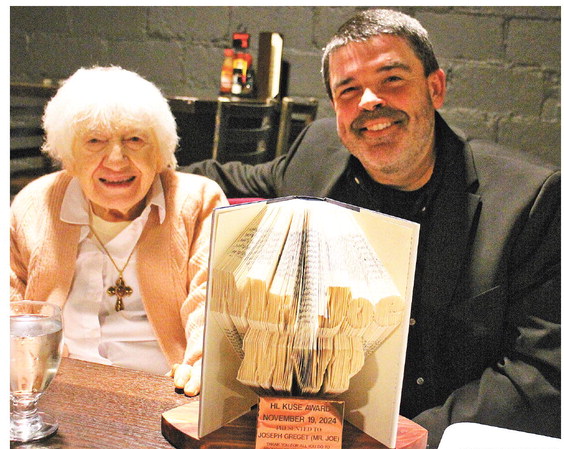The county’s stated position is ….
The county’s stated position is prior to taking ownership of the dam under the 2017 resolution, the Chelsea Conservation Club (CCC) had ownership of the dam structure and responsibility for it due to a board action in 1993.
Since the 2017 county board action, and the formal transfer that occurred in state records in early 2018, the county forestry and recreation department has worked with engineers to do a failure analysis as well as design a new dam to replace the existing structure. In doing so, the county lowered the water level in the lake to a current elevation of 1,531 feet. This is approximately 14 inches below where the water level was prior to the 2017 resolution.
Mayer refers to the county’s position and action in 2017 as being “revisionist history” and argues the county’s ownership and interest in the dam extends back to at least 1968.
“In 1968, the CCC transferred ownership and responsibility of the park, boat landing and presumably the berms, dams, dikes, etc. to Taylor County. The deed(s) were not recorded until 2017, and state notification of dam ownership transfer did not occur until early 2018,” Mayer stated.
Mayer also contends the county’s interpretation of the dam is incorrect. Rather than just being the 175-foot earthen structure Mayer referred to as the “tin whistle dam,” he said it includes additional dikes and berms along the shoreline using the definition of dam as any structure that holds back water. He said this ownership was further reinforced by the 1993 board action.
Mayer made repeated reference to a 1967 topographical map done by the state which he says shows a north and an east dike. Mayer said the north dike was the original outlet of Fischer Creek which was dammed to expand Chelsea Lake from its natural border of 57 acres to the current 120 acres.
Mayer references resolution 93-1-12 which he quotes as “the County has maintenance responsibility for the Chelsea Lake dam… .”
“The resolution does not state that the County will assume the responsibility with the purchase of the property, but rather that the responsibility was already theirs, “ Mayer states. “One can only concur that the county did indeed have dam responsibility prior to 1993. Our search for records at Taylor County, Chelsea Conservation Club, and the State of Wisconsin between 1968 and 1993 have proved fruitless. Therefore, it is our position that transfer of dam ownership from the CCC to the County in 1968 or between 1968 and 1993, included BOTH the North and East dikes, to include the appurtenant, ‘contiguous,’ adjacent and related structures.”
The end goal of Mayer’s arguments is that he says the county is responsible for more than just the earthen dam structure and that the county, and not the property owners, should be taking the lead in working to get Department of Natural Resources permission to make the necessary improvements to the berms that would be required to have the water level raised.
County attorney Ruthann Koch disagreed with Mayer’s conclusion. She noted the issues were discussed and ownership was resolved through the 2017 board action. “This isn’t new information,” she said of the material Mayer referenced.
Koch said the board members voted to take ownership of the dam in 2017.
“The berms and dikes were ignored,” Mayer said, adding that it is not just the east dike but all the dikes and berms that should be considered. He said the county in 2017 did not follow law and ownership of the property.
“They ignored information because they didn’t have the stomach or the budget for it,” Mayer said.
Committee member Scott Mildbrand, who was the author of the 2017 county board resolution said he drafted it after talking with then county attorney Ken Schmiege who he said told him he felt the county had no ownership of the dam. “How can you reaffirm what the county never owned in the first place,” Mildbrand said.
Mildbrand said he was very proud to have voted in 2017 to keep Chelease Lake which he described as being a “local treasure.” He said he was also proud of the county board members who stepped up when the Chelsea Conservation Club was no longer able to keep the dam. “Taylor County stepped up and said it was worth keeping,” he said.
Mayer repeatedly called on the county to “do the right thing” by the 20 Chelsea Lake property owners. He also said there was a lack of information being made available to the property owners and to the public about the dam and lake. He disagreed with committee member Chuck Zenner having made comments about the potential high cost of feasibility study and work.
Zenner defended those comments noting they have been told it would cost $400,000 to $500,000 to redo the dikes in order to maybe be able to raise the water level. This is on top of $60,000 to $70,000 to do the feasibility study.
The county is currently committed to replacing the existing earthen dam with an engineer’s estimated price of about $250,000 and has sought grant funding through the DNR to fund up to half of that cost. The county was unsuccessful in getting the grant this year and is waiting until 2022 to reapply.
Zenner noted the county has gone on record as willing to be a partner with a lake district if the property owners created one. Such a district would have taxing authority to levy assessments against property owners for maintenance and improvements to the lake. Mayer said the property owners are not opposed to the creation of a lake district, but he said he felt it should include a wider area than just the properties adjoining the lake to encompass most of the eastern part of the county suggesting a border that extends 20 miles out from the lake.
“I don’t think the taxpayers are stupid,” Mayer said, suggesting that residents should be asked to support the project. He downplayed Zenner’s suggested costs as wanting to “scare” property owners and noted that if the county were to do the work on the whole lake, the grants would cover half the cost and the remaining would translate into a tax impact of about $2 per $1,000 of value ($200 of a $100,000 home) if the cost was paid in one year. He said the impact would be much less if the cost was spread over several years.
After more than an hour without any movement on either side, Mildbrand proposed having Koch, as an impartial individual, contact DNR representatives who are familiar with the lake to get their opinion regarding what it would take to possibly raise the water level 10, 12 or 14 inches and report back to the executive committee.



